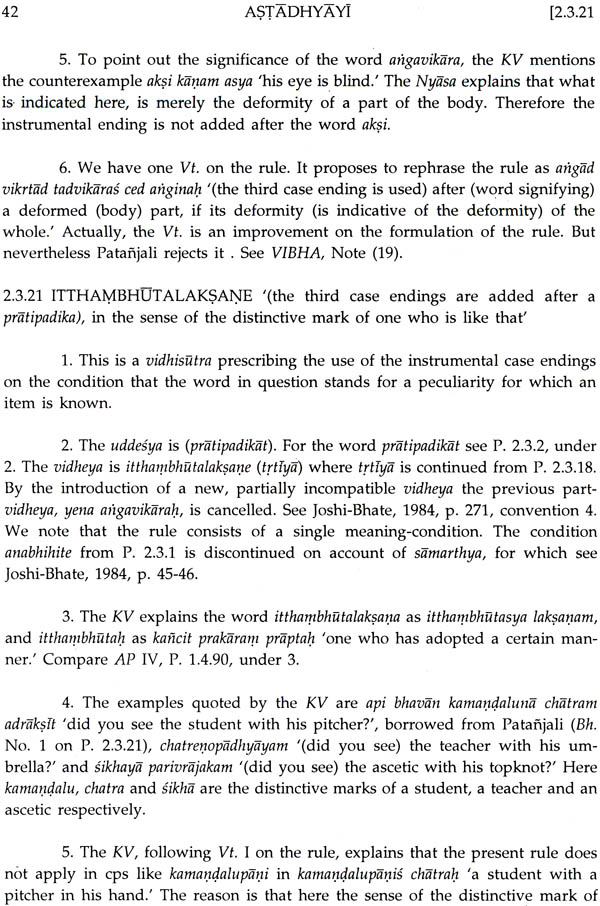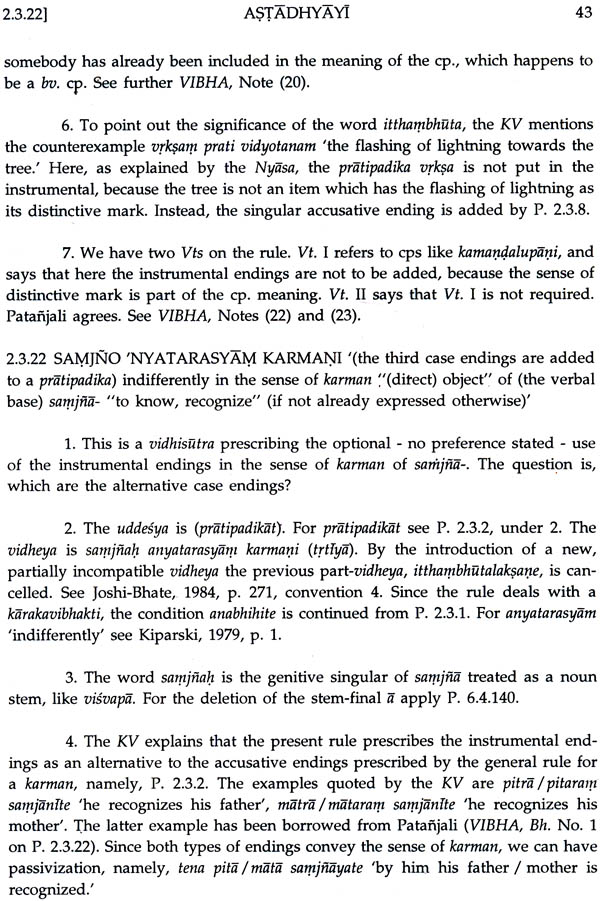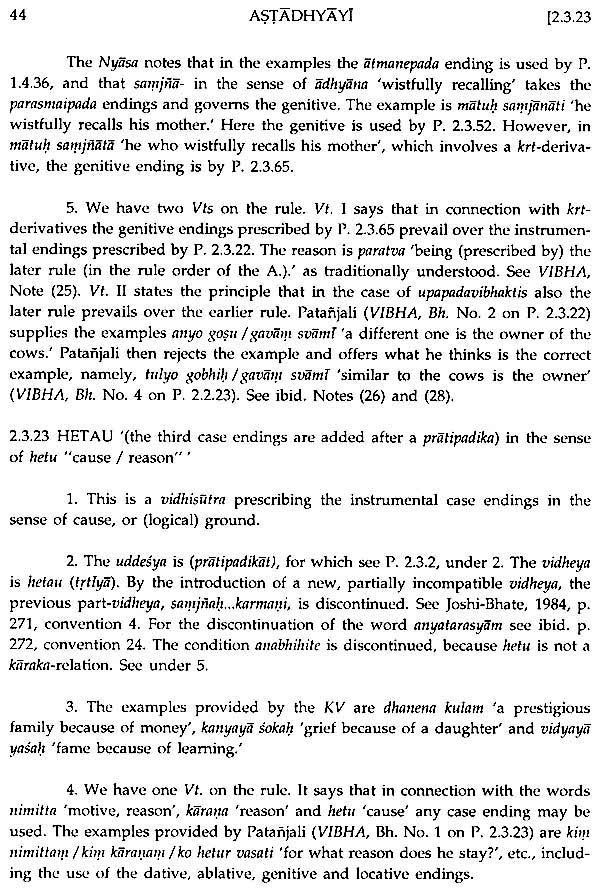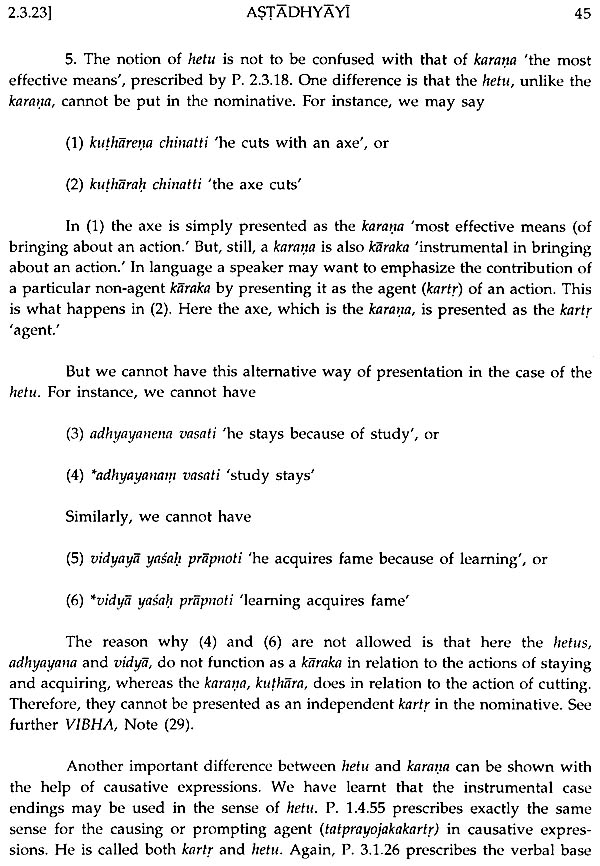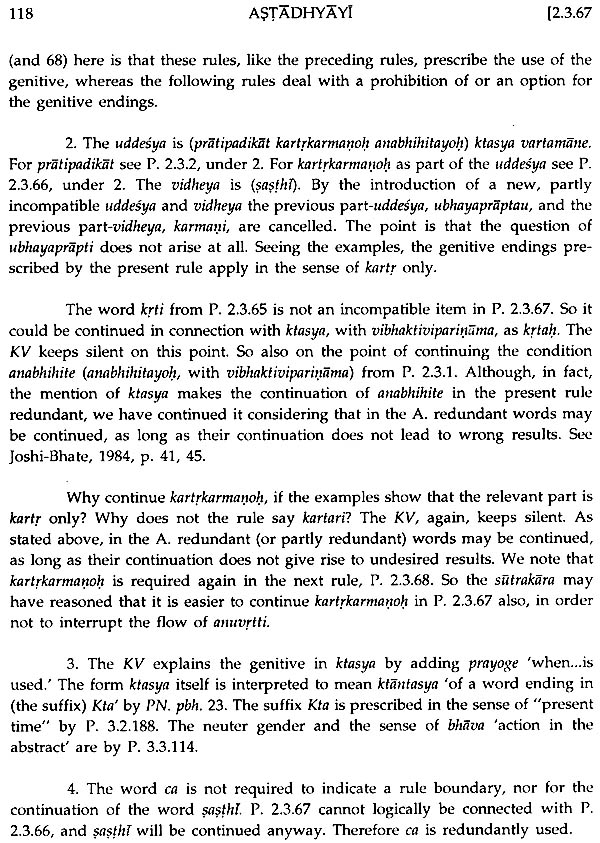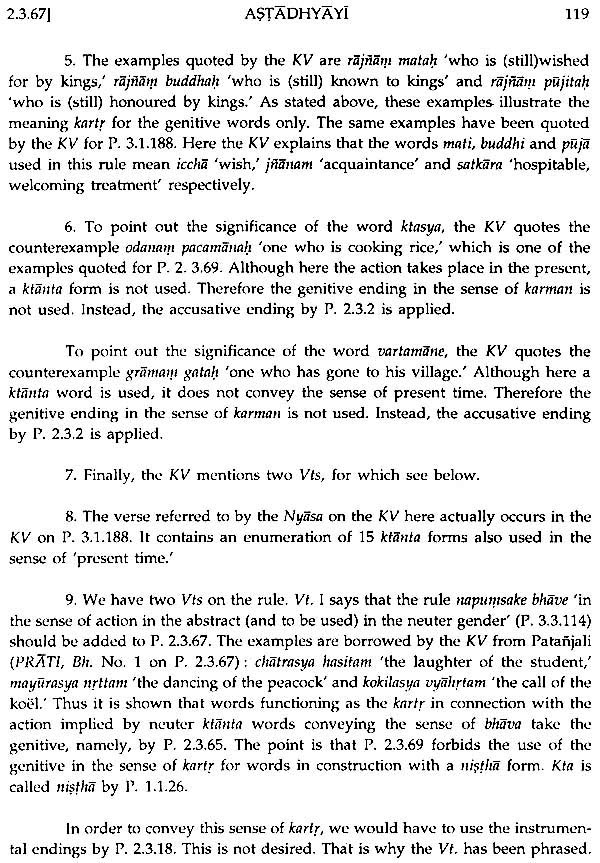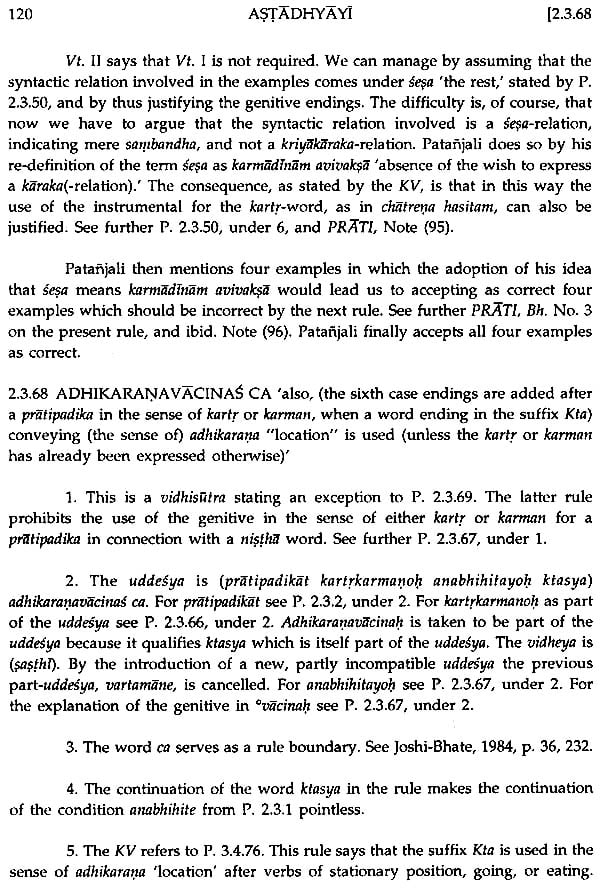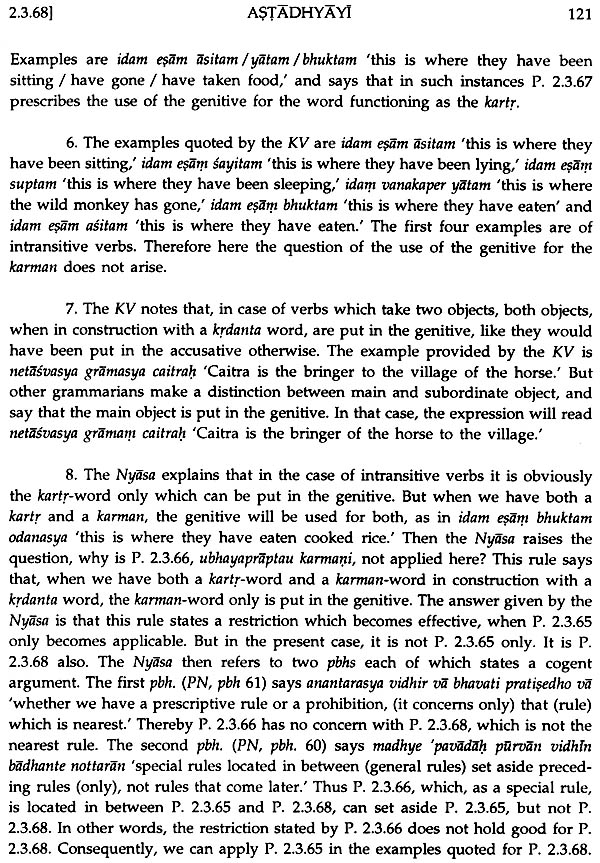
The Astadhyayi of Panini: Volume VII (2.3.1 - 2.3.73)
Book Specification
| Item Code: | IDE657 |
| Author: | Translation & Explanatory Notes By. S.D. Joshi & J.A.F. Roodbergen |
| Publisher: | SAHITYA AKADEMI, DELHI |
| Language: | English |
| Edition: | 1998 |
| ISBN: | 8126005890 |
| Pages: | 176 |
| Cover: | Hardcover |
| Other Details | 10.0" X 7.7" |
| Weight | 550 gm |
Book Description
From the Introduction:
P. 2.3: Survey of the Topics
1. the pada is rather well-organized. It deals with one main topic, namely, the definition of the meanings of the case endings added after a pratipadika in noun-verb dependence relations and in noun-noun dependence relations. The first type of relations are termed (kriya-)karaka-relations which determine the combinatory possibilities of nouns with a finite verb. The second type of relations are termed sesa-relations which determine the possibilities of syntactic combination of nouns with other nouns. Compare P. 2.3.50, under 3. In addition, upapadavibhaktis, case endings dependent on the mere presence of particular words, no karaka-title being involved, are dealt with. The case endings themselves come in sets numbered one to seven. The Sanskrit names, prathama (supply: vibhakti), etc. are laukika 'non-technical' designations. The whole of the pada is brought under the heading rule (A) anabhihite 'if not (already) expressed otherwise' (P. 2.3.1). Thus the twice denotation of the same karaka is disallowed.
The pada can be easily divided into two main divisions, and into a number of smaller sections introduced by a meaning-definition of a set of case endings, but in which other case endings are included as well. The main divisions are P. 2.3.2-49 (karaka-relations) and P. 2.3.50-73 (sesa-relations) The rules introducing meaning-definitions of case endings are the following:
(B) P. 2.3.2 Defines the set of the second (accusative) case endings as conveying the sense of (anabhihita) karman.
(C) P. 2.3.13 Defines the set of the fourth (dative) case endings as conveying the sense of sampradana.
(D) P. 2.3.18. Defines the set of the third (instrumental) case endings as conveying the sense of (anabhihita) kartr and of karana.
(E) P. 2.3.28. Defines the set of the fifth (ablative) case endings as conveying the sense of apadana.
(F) P. 2.3.36. Defines the set of the seventh (locative) case endings as conveying the sense of adhikarana.
(G) p. 2.3.46. Defines the set of the first (nominative) case endings as conveying the sense of the nominal stem meaning, gender and number. This is the set of case endings used for the karaka which is abhithita .
(H) P. 2.3.47. Defines the set of the first (nominative) case endings as conveying the sense of sambodhana 'address.'
(I) P. 2.3.50. Defines the set of the sixth (genitive) case endings as conveying the sense of sesa, that is, of the remaining case relations.
